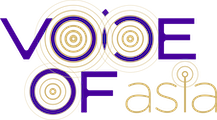
In the basement of a museum in Tehran, the capital of Iran, lies a collection hailed as one of the world's rarest artistic treasures, yet largely unknown. For decades, masterpieces by masters such as Pablo Picasso, Vincent van Gogh, Andy Warhol, and Jackson Pollock have been hidden here, shrouded in an aura of mystery, making them a captivating secret.
According to a 2018 estimate, the collection is worth as much as $3 billion. Since the Iranian Revolution in 1979, only a small fraction of the works have been exhibited. In recent years, the Tehran Museum of Contemporary Art has begun showcasing some of its most compelling pieces, allowing the world a glimpse of its splendor, and igniting curiosity among art enthusiasts.
In October 2024, the Tehran Museum of Contemporary Art held the "A Few Steps Further" exhibition, which was extended twice due to strong public demand, until it concluded in January 2025. The exhibition was widely regarded as one of the most important in the museum's history, and it also became the most visited, demonstrating the public's keen interest in art.
This exhibition featured more than 15 works for the first time, including a sculpture by Jean Dubuffet, which also marked its debut in an Iranian exhibition. From abstract expressionism to pop art, the museum's collection is like a time capsule, recording key moments in the history of art, and preserving artistic heritage.
The collection includes Warhol's portrait of Farah Pahlavi, the last Queen of Iran, a rare piece that blends his pop art style with Iranian cultural history. In addition, Francis Bacon's "Two Figures Lying on a Bed with Attendants" depicts someone peeping at two naked men lying in bed. On the opposite wall in the museum's basement hangs a portrait of Ayatollah Ruhollah Khomeini, the founder of the Islamic Republic of Iran, forming a stark contrast, and highlighting the complex relationship between art and politics.
The museum was built in 1977 and sponsored by Pahlavi, the widow of the overthrown last Shah of Iran. Pahlavi was an enthusiastic advocate for the arts, and her cousin, architect Kamran Diba, designed the museum. The museum's establishment aimed to introduce modern art to Iranians and bring Iran closer to the international art community. The museum soon amassed numerous works by masters such as Picasso, Warhol, and Salvador Dali, as well as works by leading figures in Iranian modernism, quickly becoming a beacon of cultural exchange and artistic aspiration, thus solidifying its cultural importance.
However, the revolution broke out in 1979. Iran became an Islamic Republic, the monarchy was overthrown, and the clergy seized political control under the leadership of Ayatollah Khomeini. Many works of art were deemed unsuitable for public display due to nudity, religious sensitivities, or political implications. Pierre-Auguste Renoir's "Gabrielle with Open Shirt" was considered too indecent. Warhol's portrait of the former Iranian Queen was also sealed for political reasons. In fact, during the turmoil of the revolution, Pahlavi's portrait was vandalized and torn with knives, reflecting the tumultuous times.
After the revolution, many works of art were locked away, gathering dust in the basement, becoming a legend in the art world. It was not until the late 1990s, during the tenure of reformist President Mohammad Khatami, that the museum regained its cultural significance. Suddenly, the world remembered what it had been missing. Art lovers simply couldn't believe their eyes: Van Gogh, Dali, and even Monet, all in Tehran, making the museum a hidden gem.
Some works have been lent to major exhibitions in Europe and the United States, briefly reconnecting the collection with the global art community. Hamid Keshmirshekan, an art historian in London, studied the collection and called it "one of the rarest modern art treasures outside the West," emphasizing its global significance.
The collection includes Henry Moore's "Reclining Figure" series – iconic works by one of Britain's most celebrated sculptors, as well as Jackson Pollock's "Mural on Indian Red Ground" – the American artist's painting technique full of dynamism and emotion. Picasso's "Painter and His Model" – his largest canvas from 1927 – is also included, a powerful representation of his post-Cubist abstract work. There is also Van Gogh's "At Eternity's Gate," one of the very rare surviving works from his first printmaking campaign in November 1882, when he created six lithographs, showcasing the breadth and depth of the collection.
However, for art lovers in the UK, the collection is out of reach. The UK Foreign Office advises against all travel to Iran, stating that British nationals and British-Iranian dual nationals face a significant risk of arrest, interrogation or detention. Holding a British passport or having links to the UK may be grounds for detention by the Iranian authorities, highlighting the geopolitical challenges.
The museum faces challenges as it operates on a tight budget. Shifting political priorities mean it often functions more as a cultural center than a traditional museum. However, it remains an extraordinary institution – an unlikely guardian of modern art masterpieces in the heart of Tehran, continuing to preserve and promote art in challenging circumstances.




















